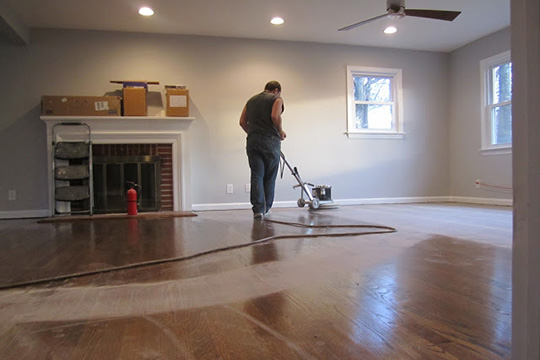Before commencing on a wood floor sanding project on your own, there are a few considerations you need to make especially if you are not really an expert in the profession. Even if you have some expertise in sanding wooden floors, some jobs may be out of your experience level. Success on a sanding job depends highly on whether you understand the scope of the job as well as the size, orientation, and condition of the floor. Thus, here is a list of a few things you should consider before embarking on sanding a wooden floor.
- Consider the magnitude of the job
You need to measure the rooms you expect to sand and get the exact square footage. For a novice sander, 500 square feet is as big as it should get, especially if they are working alone and plan to finish the job over the weekend. It is important to note at this point that the more edges a sanding job presents, the harder and longer the task will become. For instance, it is much harder and will take much longer to sand 500 square feet comprising of multiple bedrooms, a hall, and closets than sanding 500 square feet of a living room area.
- Consider the amount of finish on the floor
The more finish that is on the floor, the more work you are going to have on your hands. Thus, before embarking on this solo mission, be sure that you can comfortably handle the amount of product left on the floor. Do not handle a sanding project whose floor has thick layers of wax or shellac unless you are completely sure you are capable. Floors with wax layers and shellac are especially difficult to work on.
- Consider time lapse between sanding episodes
The more time lapses between the previous and current sanding project on the floor, the harder it is to sand the floor. This is because the boards have become distorted, making it even harder to level and flatten them. Any floor, hardwood or otherwise, that has not been sanded in more than twenty years will have significant distortions including having spots that are skewed, crowned, or cupped.
- Consider the previous refinishing result
If the previous refinishing job was done horribly, then you might inherit what they call sander flaw. You definitely do not want to see these flaws on your first or second sanding project. It takes an enormous amount of time and effort to remove these flaws from the wooden floor.
- Consider the material of the floor
A significant proportion of sanders would decline a job that involves a maple wooden floor in a house that was built before the 1940s. This is because of how difficult it is to sand over maple especially when it gets older. Older maple is usually mineralized and very dense and requires a lot of grinding to do a perfect job over it. It is best to leave these kinds of floors to true professionals before you engage your services in a project that requires more expertise than you currently possess.




